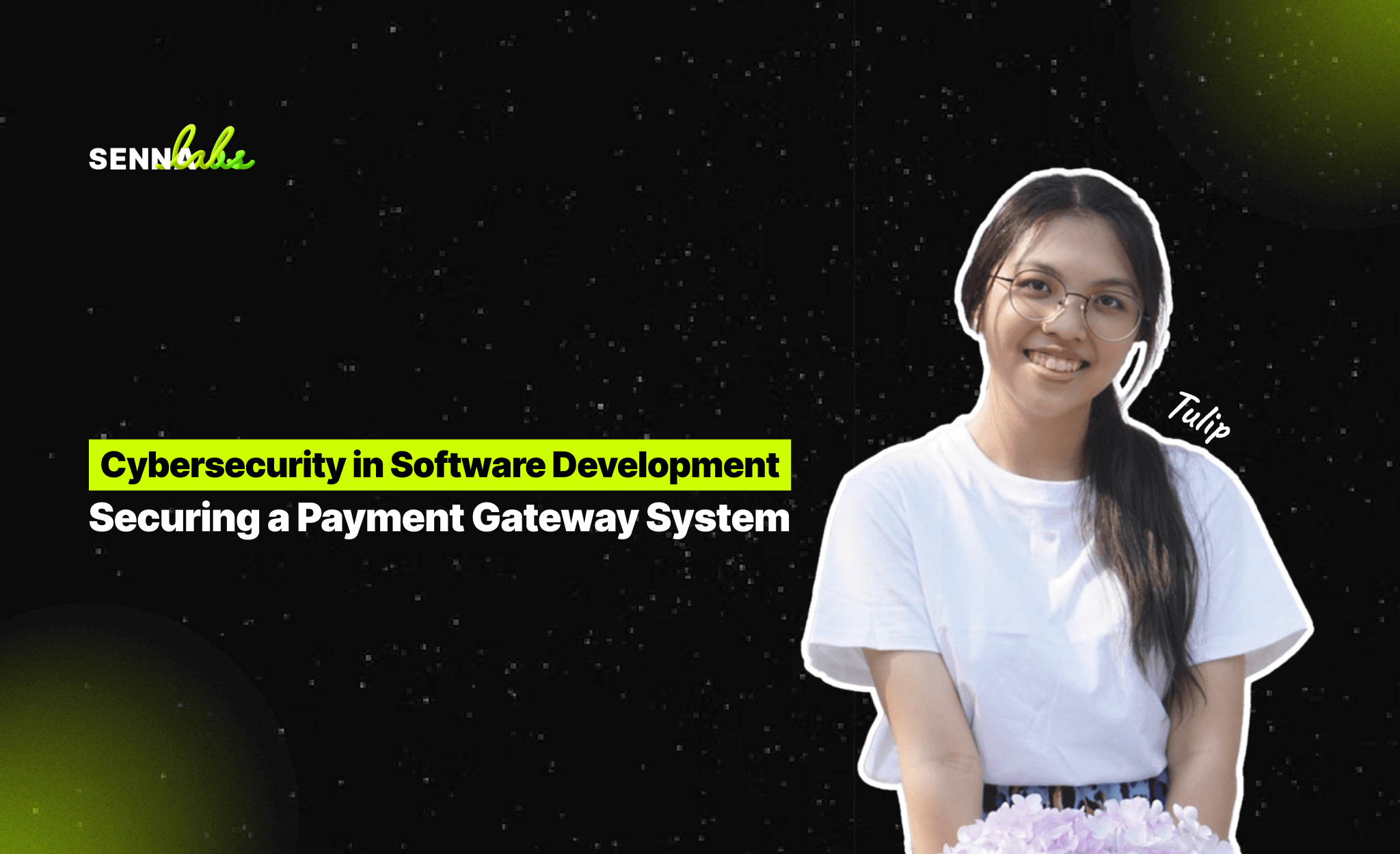Cybersecurity in Software Development: Securing a Payment Gateway System
Share

In an era where digital transactions have become the norm, securing payment gateway systems is a critical aspect of software development. With cyber threats on the rise, businesses handling online payments must implement robust cybersecurity measures to protect sensitive financial data and ensure compliance with security regulations.
Cybersecurity in software development focuses on securing transactions, preventing fraud, and safeguarding user information. This article explores best practices for securing payment gateway systems, key cybersecurity threats, and strategies for ensuring compliance with industry standards.

The Importance of Cybersecurity in Payment Systems
Online payments involve highly sensitive customer information, including credit card details, banking credentials, and personal identification data. Any vulnerability in a payment gateway can expose businesses and customers to risks such as data breaches, identity theft, and financial fraud.
Key Reasons Why Payment Gateway Security is Essential:
-
Prevents financial loss due to fraud and cyberattacks.
-
Builds customer trust by ensuring data protection.
-
Ensures compliance with regulations like PCI DSS, GDPR, and PSD2.
-
Reduces the risk of reputational damage from security breaches.
A well-secured payment gateway system protects both merchants and consumers, ensuring that transactions are processed safely and efficiently.
Common Cybersecurity Threats to Payment Gateways
1. Data Breaches
Hackers exploit vulnerabilities to gain unauthorized access to payment data, leading to massive financial and reputational losses.
2. Man-in-the-Middle (MitM) Attacks
Cybercriminals intercept transactions between users and payment systems, altering or stealing financial data.
3. Phishing and Social Engineering
Fraudsters trick customers into revealing their payment details through fake websites, emails, or SMS messages.
4. SQL Injection Attacks
Attackers inject malicious SQL queries into payment systems to gain access to databases storing customer financial information.
5. Distributed Denial-of-Service (DDoS) Attacks
Hackers overwhelm a payment system with massive traffic, causing downtime and disrupting transactions.
6. Malware and Ransomware
Cybercriminals deploy malicious software to steal or encrypt payment data, demanding ransom for its release.
To mitigate these risks, businesses must adopt cybersecurity best practices throughout the software development lifecycle.
Best Practices for Securing Payment Gateway Systems
1. Implement Secure Encryption Protocols
Encryption ensures that payment data remains confidential and unreadable during transmission. Businesses should use:
-
SSL/TLS encryption to secure data in transit.
-
AES encryption to protect stored financial data.
-
Tokenization to replace sensitive information with unique tokens.
2. Ensure Compliance with Security Standards
Payment gateways must adhere to industry regulations and compliance frameworks to guarantee security. These include:
-
PCI DSS (Payment Card Industry Data Security Standard) – Mandates encryption, access control, and network security for card transactions.
-
GDPR (General Data Protection Regulation) – Ensures customer data privacy and protection.
-
PSD2 (Payment Services Directive 2) – Enforces strong customer authentication (SCA) for online payments.
3. Strong Customer Authentication (SCA) and Multi-Factor Authentication (MFA)
To prevent unauthorized access, businesses should implement:
-
Two-Factor Authentication (2FA) using OTPs, biometrics, or authentication apps.
-
Behavioral analytics to detect fraudulent login attempts.
4. Secure API Integration
Payment gateways often use APIs to connect with merchants. Secure API development includes:
-
OAuth 2.0 authentication for secure access control.
-
Rate limiting and IP whitelisting to prevent abuse.
-
Regular API security audits to detect vulnerabilities.
5. Fraud Detection and AI-Powered Risk Management
AI and Machine Learning enhance fraud detection by:
-
Identifying unusual transaction patterns.
-
Flagging potentially fraudulent activities in real-time.
-
Blocking high-risk transactions automatically.
6. Secure Software Development Lifecycle (SDLC)
Cybersecurity must be integrated into every phase of software development:
-
Secure coding practices to prevent vulnerabilities.
-
Regular penetration testing to identify weaknesses.
-
Automated security scanning to detect potential threats.
7. Role-Based Access Control (RBAC) and Least Privilege Principle
Access control mechanisms must:
-
Limit access to only authorized personnel.
-
Implement privileged account monitoring.
-
Require audit logs for all system activities.
8. Continuous Security Monitoring and Incident Response
A robust security monitoring system detects threats in real time and prevents data breaches. Businesses should:
-
Deploy SIEM (Security Information and Event Management) solutions.
-
Implement automated incident response workflows.
-
Conduct regular security audits and compliance checks.
Advantages of a Secure Payment Gateway
1. Enhanced Customer Trust and Confidence
A secure payment system reassures customers that their data is protected against cyber threats.
2. Reduced Financial and Legal Liabilities
Preventing breaches minimizes financial losses and ensures compliance with data protection laws.
3. Improved Transaction Speed and Efficiency
Optimized security measures reduce payment processing delays while ensuring fraud prevention.
4. Competitive Advantage in the Market
Businesses that prioritize cybersecurity gain a strong reputation, attracting more customers.
Best Tools for Payment Gateway Security
To implement a robust cybersecurity framework, businesses can use:
-
SSL Certificates – Encrypts payment data during transactions.
-
HSM (Hardware Security Modules) – Securely generates and manages cryptographic keys.
-
Firewalls & Intrusion Detection Systems (IDS) – Protect against network threats.
-
AI Fraud Detection Solutions – Monitors transactions for suspicious activity.
-
Penetration Testing Tools – Identifies vulnerabilities before cybercriminals exploit them.
Challenges in Securing Payment Gateway Systems
Despite implementing security measures, businesses often face challenges such as:
-
Keeping up with evolving cyber threats – Hackers develop new attack techniques rapidly.
-
Balancing security with user experience – Overly complex authentication processes can frustrate customers.
-
Ensuring compliance with multiple regulations – Global businesses must meet diverse security requirements.
To overcome these challenges, businesses must adopt proactive cybersecurity strategies and continuously update their security frameworks.
Conclusion
Cybersecurity in software development plays a crucial role in securing payment gateway systems, ensuring that transactions remain safe, fraud is minimized, and customer data is protected. By implementing strong encryption, compliance measures, AI-driven fraud detection, and continuous monitoring, businesses can safeguard their payment platforms against cyber threats.
As digital transactions continue to rise, investing in robust cybersecurity solutions will not only prevent financial losses but also build long-term customer trust, ensuring a secure and seamless payment experience.

Share

Keep me postedto follow product news, latest in technology, solutions, and updates
Related articles
Explore all


